
Bush Dog
Bush Dog
Bush Dog
Do you know the most primitive dog in the dog family? They are called “bush dog” and are animals that live in Central and South America. In addition, it is characterized by a body shape of long and short legs such as weasels and dachshunds. Whether you know a bush dog or not, let's take a look at what features and secrets they have in this article!
Bush Dog Basic Infomation
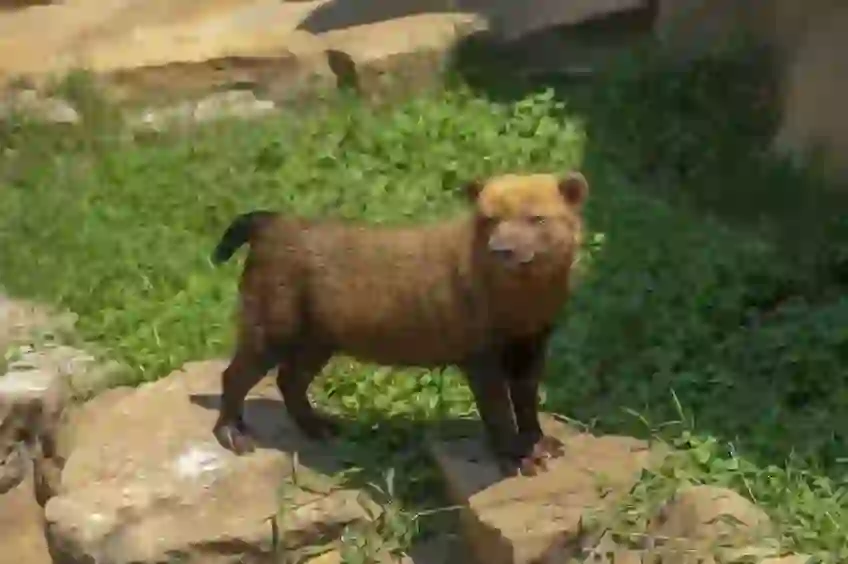
Mammalia-Carnivora-Canidae.
Length 58~75cm. Weight 5~7kg.
Bush dog is the most primitive canine species, characterized by short legs and long torso, like weasels and dachshunds.
In addition, because the ears are small and round, some people think that they are not companions of the dog, but companions of the weasel.This unique shape is thought to be suitable for running through grass and shrubs and using holes dug by armadillo.
Bush dog is basically a nocturnal animal that is active at night and rests in a hole during the day.
Although it is an animal that does not know much about how to live in the wild, it seems to live while hunting by making a herd of about 10.
Females reach sexual maturity at about 10 months and males reach sexual maturity at about 12 months.The duration of pregnancy is about two months (65 to 83 days), and one to six children (an average of four) are born in one birth.
Bush Dog Q&A

What is the origin of the name bush dog?
In English, it is called "bush dog", but in Japanese it is named "Yabuinu". Why did they come to be called Yabuinu in Japanese this time? We will introduce its origin.
In fact, it was named yabuinu because it was an animal of the canid family living in the yabu.
※By the way, yabu in Japanese means "bush" in English, and inu in Japanese means "dog". You can see that it has the same meaning in English and Japanese.

Why do bush dogs live there?
Bush dogs live in a wide range of areas from Central America to South America (such as Panama, Colombia, Peru, Bolivia, Venezuela, and Guyana).
We don't know exactly why the bush dog came to live in this area.However, it is also possible that there were enough food and hiding places in this area for the bush dogs to survive with their primitive characteristics.
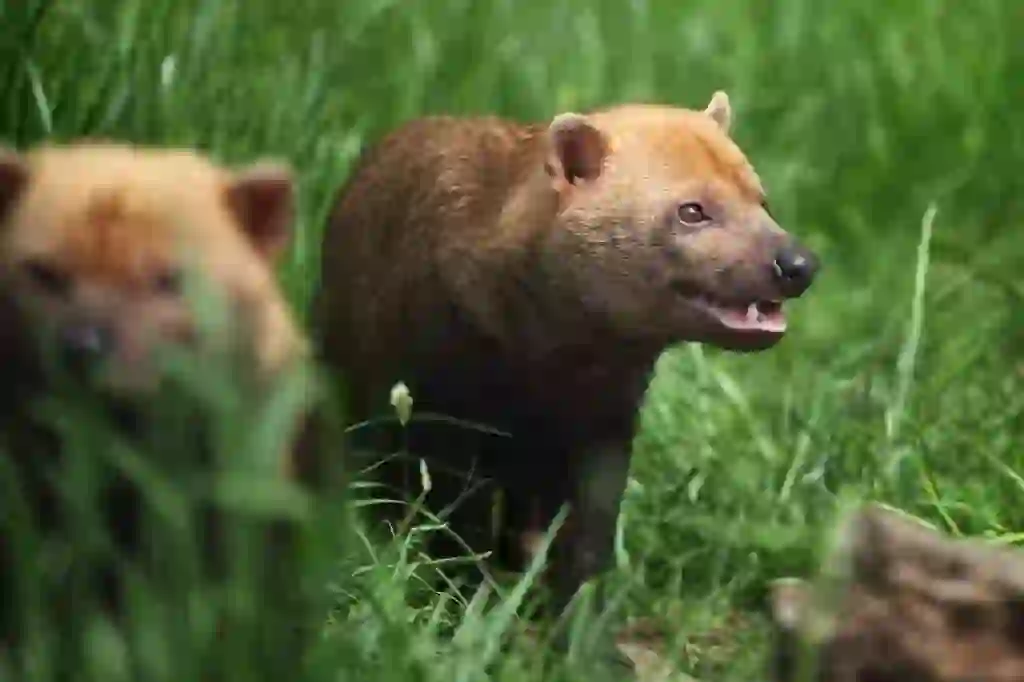
What do bush dogs eat?
Bush dogs are carnivorous animals that feed on small mammals such as agoutis and armadillos, as well as birds, fish and other prey in the wild.
Sometimes they cooperate in packs to hunt larger animals such as capybaras and brocket deer. Although bush dogs are mainly meat-eaters, they also like fruits.
Therefore, in zoos, they are given meat (chicken, horse, mouse, etc.) and dog food as the main diet, and fruits such as apples and bananas as well.

Is it true that bush dogs have webbing?
It's true.
Bush dogs are canids, but they have developed webbed skin between their fingers.
I am good at swimming and also good at diving in the water.When you see a dog swimming, it may look more like an otter than a bush dog.
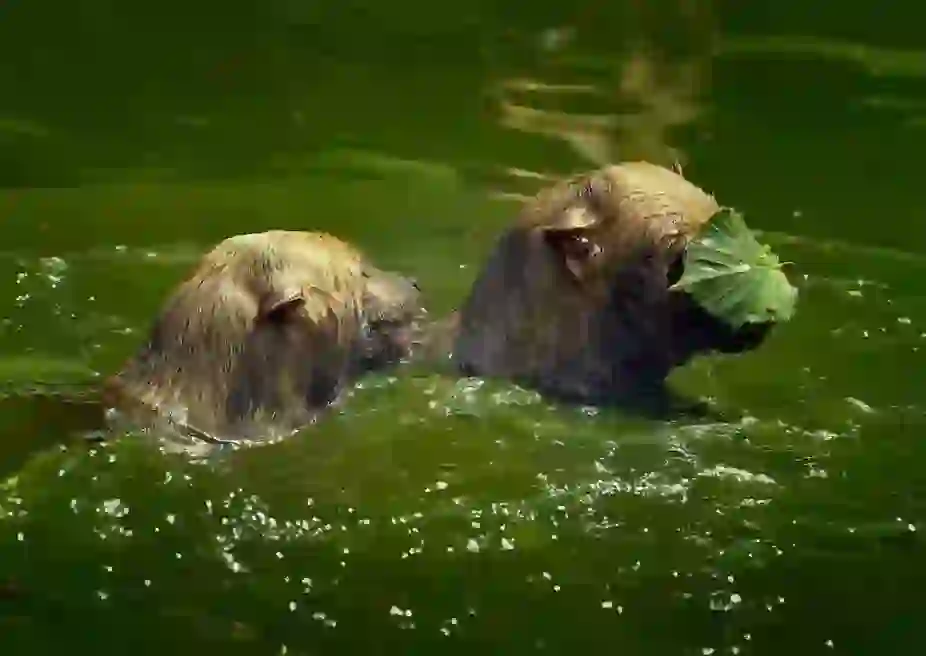
Is it true that bush dogs are good at handstands?
It's true.
Some animals use their urine and feces to leave their scent and mark their territory, saying “this is my turf”. Bush dogs are also animals that have large territories, and they have a habit of marking them in various places to maintain them.
And the female bush dogs are known to do handstands when they mark their territory. The reason why they do handstands and pee is that they can mark more efficiently with their long-bodied and short-legged physique.
By doing handstands, they can reach higher places and spray farther with their urine.
However, the female bush dogs are not able to do handstand peeing as soon as they are born. They start to try to do handstands as they grow up, and they learn how to control their strength and balance through trial and error, until they can finally do handstand peeing.
By the way, the male bush dogs mark their territory by lifting one leg and peeing like dogs.
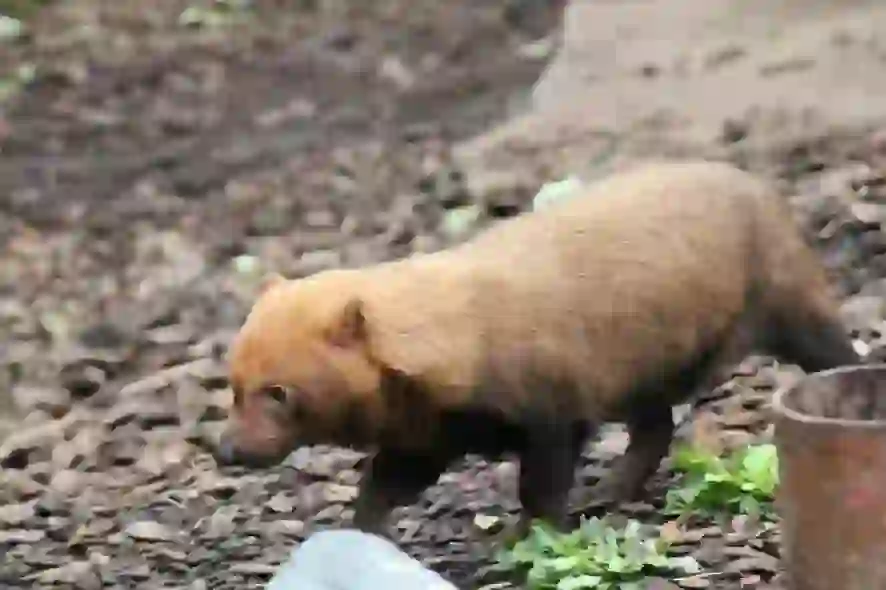
Is it true that bush dogs can dash backwards?
It's true.
Bush dogs are known to be able to run backwards while facing forward.
Bush dogs live in deep bushes and holes. Therefore, when they encounter enemies, they run backwards while looking forward, trying to escape from them. The speed of bush dogs running backwards is said to be almost the same as when they run forward.
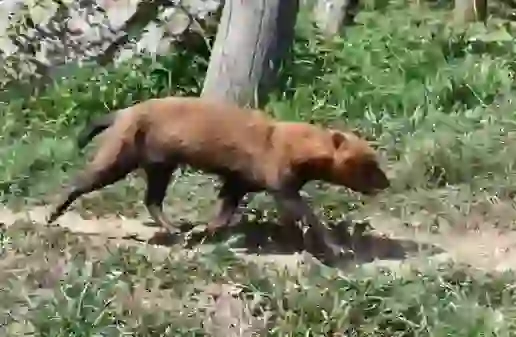
Can a bush dog be kept as a pet?
When breeding rare animals at home, it is necessary to follow the established laws in some countries. This time, we will introduce whether it is possible to raise bush dogs at home in Japan.
The bush dog is classified as “a species threatened with extinction and affected or likely to be affected by trade” in Appendix I of the Washington Convention, which is an international agreement to protect wild animals and plants. Animals classified in Appendix I are protected worldwide and cannot be traded unless they are for special purposes such as research.
Therefore, it is basically impossible to import bush dogs from overseas for the purpose of keeping them as pets. There may be a possibility to purchase and keep individuals bred domestically, but probably it is safe to assume that “keeping bush dogs as pets” is almost impossible.

Is there a place in Japan where you can see a bush dog?
Bush dogs are kept at the following zoos in Japan: “Saitama Children’s Zoo” in Saitama Prefecture, “Yokohama Zoological Gardens Zoorasia” in Kanagawa Prefecture, “Higashiyama Zoo and Botanical Gardens” in Aichi Prefecture, “Kyoto Municipal Zoo” in Kyoto Prefecture, “Kobe Animal Kingdom” in Hyogo Prefecture, “Hirakawa Zoological Park” in Kagoshima Prefecture, and “Kochi Prefectural Noichi Zoological Park” in Kochi Prefecture.
Bush dogs are rare animals and only about 15 of them are kept in zoos in Japan. Therefore, the zoos cooperate with each other and do breeding loans (contracts to lend and borrow animals for breeding purposes) to breed them.
Recently, two babies were born at Kobe Animal Kingdom in August 2021, so you may be able to see bush dog babies at the above-mentioned zoos in the future.

What is the lifespan of a bush dog?
The lifespan of bush dogs is said to be 10 to 15 years in captivity12.
In Japan, a bush dog named "Yuta", who was kept at Saitama Children’s Zoo, lived up to 15 years old and was the oldest bush dog in the country. Many other individuals who were kept at other zoos died before 10 years old due to enteritis and other diseases.
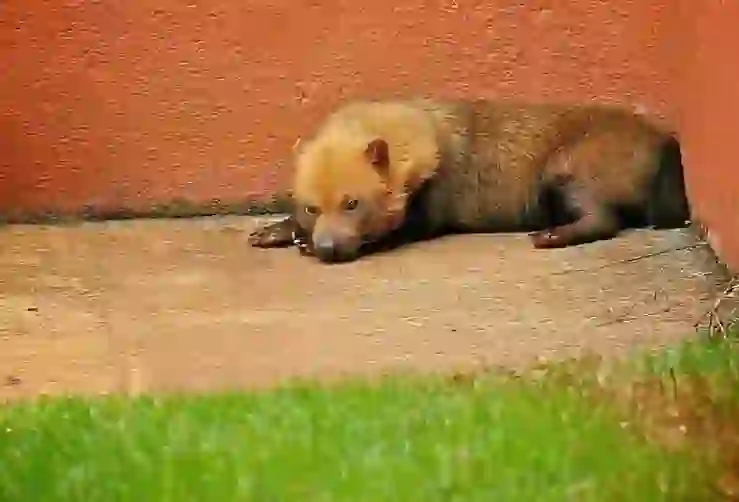
What kind of enemies does the bush dog have?
It is believed that bush dogs have no natural predators in the wild. However, they may be attacked by carnivores such as pumas and jaguars, especially when they are young, as they share their habitat with them.
But unfortunately, the biggest enemy for bush dogs is us humans.
This is because the places where bush dogs live are being developed every day, and their habitat and prey are decreasing. Moreover, it is said that more bush dogs are killed or infected by diseases from domestic dogs, as they have more contact with them.
Bush dogs are classified as “NT (Near Threatened)” in the Red List of the International Union for Conservation of Nature (IUCN), which means "a species that has a low risk of extinction immediately, but may shift to a serious situation due to changes in living conditions and other factors.

Would you like to become a part of the 'Animalbook.jp'?
Turn your knowledge into Q&A and share it with the world. ※Publication will be activated after purchase. Let's share information together!
Bush Dog Type of List
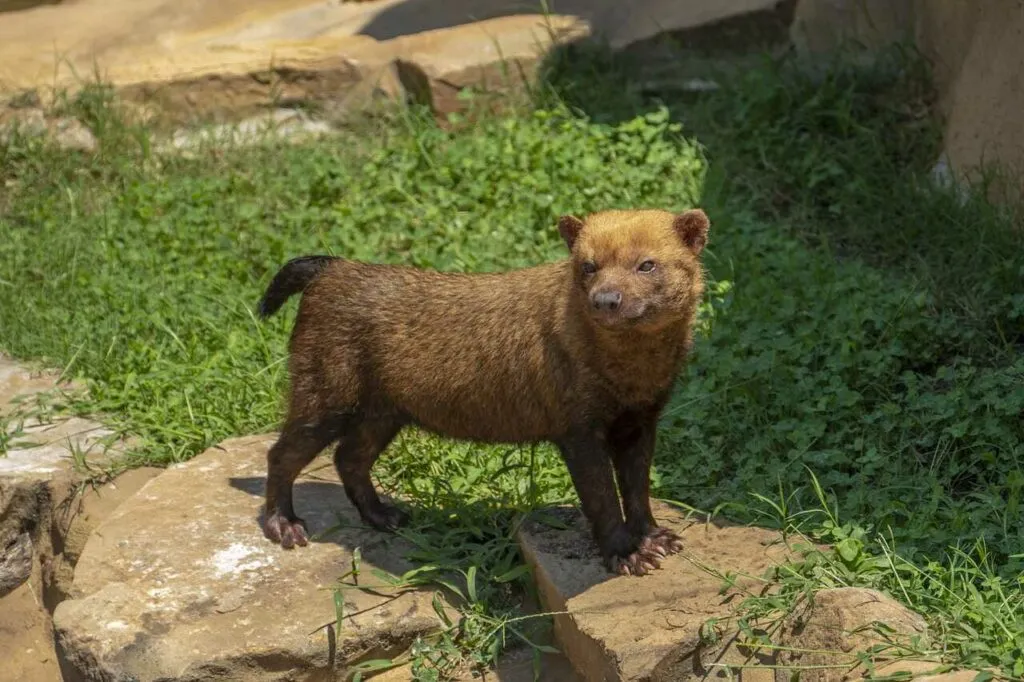
- Bush Dog
Information
Congratulations! You are the first commenter!

Create Your Favorite List!
Bush Dog
Save the animals you love! Build your own list to quickly revisit your favorites later.

Would you like to leave a comment?
※Please note: This is for the purchase of rights to post comments within the article.
Find Your Favorites!
Our shop offers a unique and attractive selection of goods themed around various animals.
Bush Dog References

- 今泉 忠明(2007年)『野生イヌの百科』データハウス
- 東山動植物園「オフィシャルブログ はじめての逆立ちおしっこ」 http://www.higashiyama.city.nagoya.jp/blog/2015/09/post-2486.html
- 埼玉こども動物公園「ヤブイヌのユウタが死亡しました」 https://www.parks.or.jp/sczoo/news_special/detail/001495.html
- よこはま動物園ズーラシア「ヤブイヌ」 https://www.hama-midorinokyokai.or.jp/zoo/zoorasia/animal/amazon/BushDog/
- 京都市動物園「どうぶつ図鑑 ヤブイヌ/Bush Dog」 https://www5.city.kyoto.jp/zoo/animals/s_venaticus
- 東山動植物園「ヤブイヌ」 http://www.higashiyama.city.nagoya.jp/04_zoo/friend/2018/02/post-32.html
- 朝日新聞「ヤブイヌの赤ちゃん公開 横浜・ズーラシア」
- エコチル「[高知県立のいち動物公園]生き物ってオモシロイ!!|今月のどうぶつ:ヤブイヌ」 http://tokyo.ecochil.info/2021/07/12/z2107noichi-zoo_kouchi/
- ZOONEWENGLAND「BUSH DOG」 https://www.zoonewengland.org/stone-zoo/our-animals/mammals/bush-dog/
- The Canid Specialist Group「BUSH DOG」 https://www.canids.org/species/view/PREKIV875331
Bush Dog Introduction of media used

出典:https://pixabay.com/images/id-5491098/

出典:https://pixabay.com/images/id-2609/
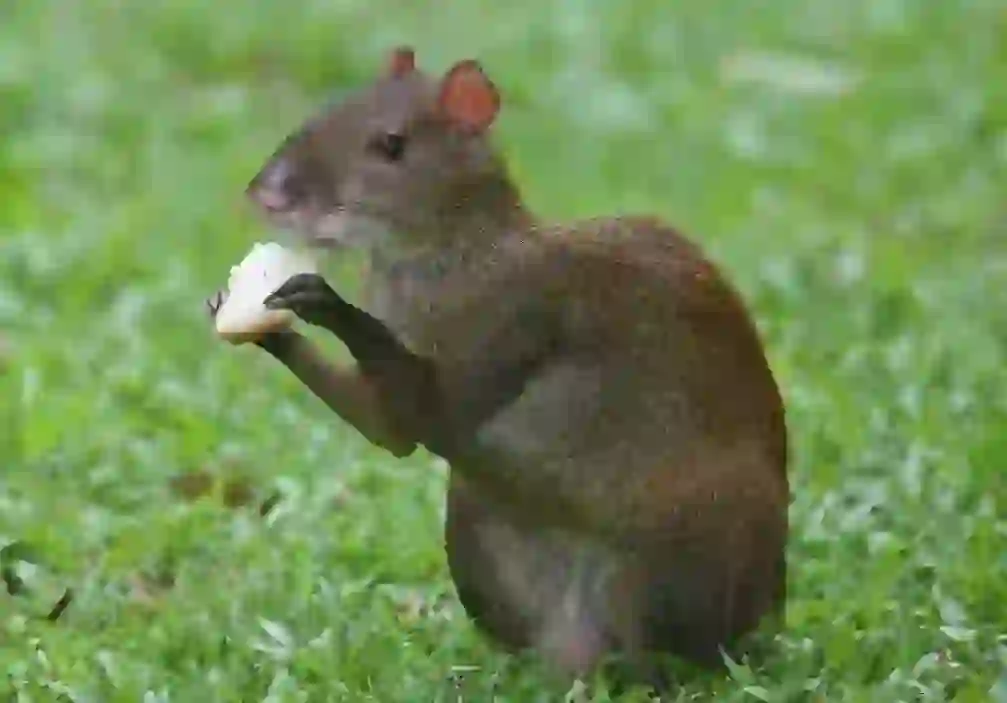
food
出典:https://commons.wikimedia.org/wiki/File:Central_American_Agouti_bp.jpg

food
出典:https://pixabay.com/images/id-178344/
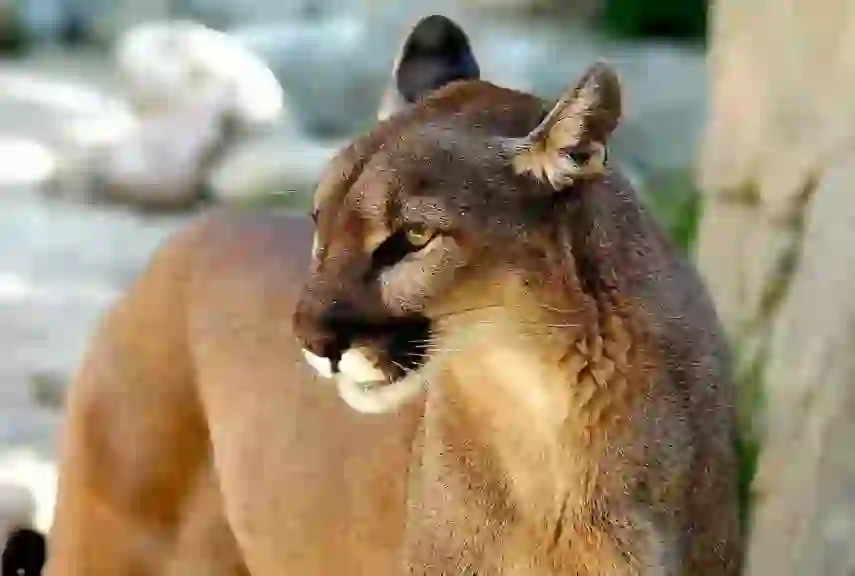
enemy
出典:https://pixabay.com/images/id-4190562/

enemy
出典:https://pixabay.com/images/id-1337201/
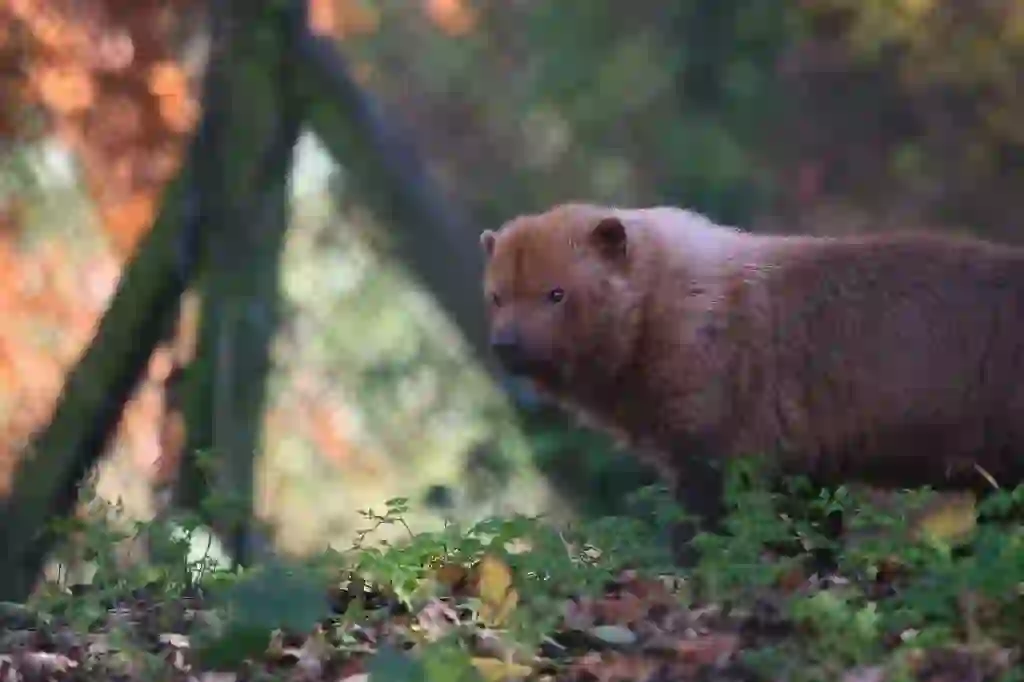
出典:https://commons.wikimedia.org/wiki/File:Bush_Dog_5.jpg

Help Enrich Our Animalbook.jp with Your Media!
We are constantly looking to expand and enrich our Animalbook.jp with amazing photos and videos of animals. If you have any media that you'd like to share, please contribute and help us showcase the beauty and diversity of the animal kingdom. Your submissions will be credited and featured in our encyclopedia, reaching a wide audience of animal lovers.


















